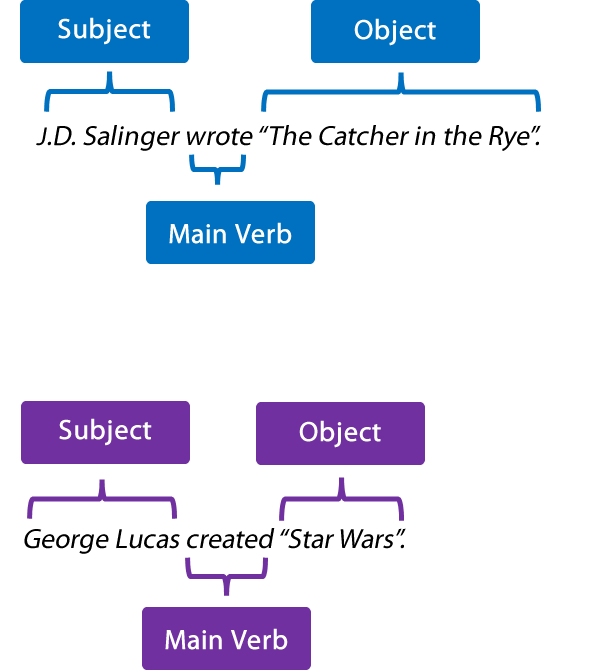1- Introduction: What is symbolism in Literature and Film?
According to Severson (2020), “Symbolism is the art of imbuing objects or things with meaning, making them represent something more than the sum of its parts.” In other words, symbolism is the art of using different elements (words, locations, colors, objects, actions, etc.) in order to convey a message or concept that is not literal. For instance, one of the most common symbols is the use of a heart to express love.

However, it is virtually impossible to attribute only one meaning to every object, due to cultural differences. For example, while in some places red represents passion or danger, in others, the same color represents death.
Therefore, symbolism ca be analyzed from two points of view: the author’s and the audience’s. On the one hand, the author, namely a filmmaker or writer, tries to convey a message through the use of symbols that are known by them and the society around them, their life experiences, and so on. On the other hand, the audience will interpret the symbols according to their own values and knowledge of the world. Thus, a paramount element in terms of interpreting symbols is the context, i.e. the situation or circumstances in which a story (film or novel) happens and that helps you understand it. Hence, it is important to consider all the elements in the story, so that we can come up with a more accurate or varied interpretation of symbolism used in any given story.
|
Glossary Imbuing (verb): (gerund form of the verb “imbue”) to fill somebody/something with strong feelings, opinions, or values. Convey (verb): to make ideas, feelings, etc. known to somebody (synonym for communicate) Accurate (adjective): correct and true in every detail. |
Let us see an example of symbolism from one of the most renowned books of all times, The Bible.
|
The content below has not been created to convince people to start believing or stop believing in any particular religion. |
1.1- The Garden of Eden: the story of Adam and Eve
Either you were raised a Christian or not, you might have heard the story of “The Garden of Eden” found in Genesis of the Bible. The story is set in a beautiful place, surrounded by nature, with green meadows, colorful flowers, fruit trees, and domestic and wild animals. The only humans living there were Eve and Adam. Every single creature lived in harmony. In other words, Eden was a utopia. God had let Eve and Adam live in his paradise under one condition: they would never eat the forbidden fruit, also known as apple. However, a snake enticed Eve to eat the apple, and so did Adam. Once they had eaten the apple, they started to experience bad feelings, such as shame of their nakedness. Therefore, God expelled them from Eden.
Naturally, the story is more complex than the summary you just read. Additionally, the Adam and Eve story differs from one religion (or holy book) to another. Nevertheless, the importance of the story does not involve religion, but symbolism.
Take your time and try to answer the questions below. Think of all the possibilities from a symbol-analysis point of view. If you identify yourself with a religion, you may want to use your knowledge to add value to your answer. Also, it is important for you to know that there are not wrong answers.
a) What do you think the apple (or forbidden fruit) represents? Why?
b) What do you think the snake represents? Why?
Some sample answers:
a) What do you think the apple (or forbidden fruit) represents?
– For some, the apple might represent sin, impurity.
– For others, the apple symbolizes the human’s constant seek for knowledge or truth.
– In some cases, the apple might represent perfection, etc.
b) What do you think the snake represents? Why?
– For some people, the snake might represent an evil spirit, energy, force, or the devil.
– For others, the snake may symbolize humans’ natural curiosity, as it convinced Eve to seek for knowledge.
– Or a snake could imply that snakes are poisonous animals, etc.
|
Glossary Utopia (noun): an imaginary place or state where everything is perfect. (For further explanation, see “Contenido 11: Ciencia Ficción en Literatura”) Poisonous (adjective): (synonym for venomous) producing poison that can cause death or illness if the animal (or insect) bites you. |
2- Why are symbols used in literature and film?
Symbols can give words double meaning, literally and figuratively speaking. For instance, the former can be explained like this: in a movie, a red rose is just a red rose. The latter, on the other hand, can be explained like this: in a movie, a red rose represents love and commitment.
Symbolism has the power to deliver hidden messages to the readers/audience. Hence, let us explore some purposes symbols serve:
a) To add emotion
Since literature and film are two forms of artistic expression, emotions play a paramount role in engaging target readers/audience. The explanation is simple: symbols add emotional resonance to a story, and therefore, they can create a lasting impression on the reader or viewer.
b) To add imagery
Sometimes, writers and filmmakers provide us with mental images, so that we can understand better the ideas they try to express. For example, in Harry Potter and the Order of the Phoenix movies, Sirius Black is lethally cursed by Bellatrix Lestrange. When Black is falling backwards, he goes through a translucent veil. The veil in this scene represents the after death.
c) To connect themes
Francis Ford Coppola’s film The Godfather is a classic. The movie is famous for its dark tone due to the violence leading to murder. However, we can see some colorful oranges in some scenes, especially before some dies. Therefore, we can conclude that oranges represent death.
d) To define characters
In J.D. Salinger’s novel The Catcher in the Rye, the main character Holden Caulfield is 16 years old. Although he is just a teenage boy, he prematurely has grey hair. In this sense, the grey hair might denote maturity and wisdom.
e) To disguise a darker message
For example, in the film Schindler’s List, there is a girl in a red coat who appears a couple of times in the movie, which is strange considering the movie is black and white. As the girl is Jewish, the read in her coat may conceal a dark message: the blood of murdered Jews during the Holocaust.
|
Glossary Former (adjective): used to refer to the first of two things mentioned. Latter (adjective): used to refer to the second of two things mentioned. |
3- Types of Symbolism in Literature and Film
The use of symbols in artistic expressions has been very helpful to convey a metaphorical message, i.e. to express an idea hidden in an action, object, character or speech. We can find figures of speech in both, films, and novels.
Next, we will explore some types of symbolism applied to fiction (literature and film). You will probably recognize some as you studied them in Content 5 (“Contenido 5: El Género Discursivo”).
a) Allegory
An allegory is a complex form of symbolism, much more complex than a metaphor. Allegory is a story in which the plot development is composed entirely by symbols (namely characters, events, locations, etc.) conveying a larger phenomenon in the real world.
Example: Animal Farm, a novel written by George Orwell in 1945, is an allegory itself. The story portrays a group of farm animals who defy human authority in order to stablish a society where animals could be free and equal. According to its author, Animal Farm is an allegory of Russian Stalinism (or Communism).
b) Hyperbole
Whenever exaggeration is used to highlight a situation, hyperboles occur. Therefore, hyperboles are used to emphasize a point in the story, but they are not literal.
For instance, in Heart of Darkness (Joseph Conrad’s novella written in 1899), the author wrote: “I had to wait in the station for ten days-an eternity”. Obviously, 10 days is not an eternity, but Conrad uses that sentence to emphasize how uncomfortable the experience of waiting for 10 days was for the main character.
c) Irony
Irony refers to symbolism wherein the intended meaning opposes the literal meaning of the words expressed. Irony can be presented through actions or words. This figurative form of message expression helps engage the audience and adds another layer to a fictional tale. Also, irony usually is perceived by the audience, but the characters do not notice it.
For instance, in William Shakespeare’s Romeo and Juliet (1597) Juliet takes a potion that makes her sleep soundly, but Romeo thinks she is dead. Hence, he commits suicide.
d) Metaphor
Basically, a metaphor refers to one idea by directly mentioning another. It essentially compares two dissimilar things while showing that they have something in common. It differs from the allegory because a metaphor is usually expressed in a phrase or sentence, whereas the allegory is expressed through an entire story.
For instance, Fern Michaels’ novel Late Bloomer (first published in 2001). The novel title is a metaphor given the fact that the main character is a young woman who has not reached her life potential yet, due to childhood memories holding her back.
e) Oxymoron
It is created by putting together two or more words which do not usually go together. This type of symbolism creates an interesting mental image in the reader or viewer. Usually, oxymoron is composed by words with completely opposite meanings.
For instance, Jack London uses the expression “flaming coldly” to describe Aurora Borealis phenomenon in his novel Call of the Wild (1903). Both words have clearly opposite connotations because “flaming” refers to heat, while “coldly” refers to coldness.
f) Pathetic fallacy
A pathetic fallacy occurs when the writer or filmmaker expresses the mood of the story though matching it with the weather or setting of the story. In other words, pathetic fallacy is the art of giving human emotions to something non-human.
e.g. in the famous novel Wuthering Heights, which was written by Emily Brönte in 1847, the main character Cathy describes a “violent thunderstorm” when the love of her life Heathcliff leaves Wuthering Heights, the place where she lived. The storm clearly described the devastating mood of the story.
g) Personification
This type of symbolism applies human attributes to inanimate objects or animals, i.e. to any object or creature that is not a human being. These attributes can be human senses, feelings, human reasoning, etc. Through personification, writers and filmmakers can create a relation between non-human things and the audience.
For instance, in Robinson Crusoe (a novel written by Daniel Defoe in 1719) a storm is described through the expression “the fury of the sea”. As the sea is an inanimate object, the attribute of “fury” (a human emotion) emphasizes how bad the storm was.
h) Simile
A simile is a comparison made between two things. It is easy to identify comparison because they are expressed through the words “like” and/or “as”.
For example, William Wordsworth in his novel Daffodils (1807) uses a simile to emphasize the loneliness of a character through the sentence: “I wandered lonely as a cloud that floats on high over vales and hills.”
|
Glossary Plot (noun): the series of events that form the story of a novel, film, or play. Hold somebody back (verb): to prevent somebody from succeeding or moving forward. Inanimate (adjective): not alive. Defy (verb): to refuse to obey or show respect to somebody in authority, law, etc. |
4- Useful Verbal Expressions to Analyze Symbols
Now that you are ready to analyze symbology in film and literature, we present you with a list of verbs, which are synonyms for symbolize. Also, below the table, you will find a review on passive and active voice.
|
Verb |
Example in Passive Voice | Example in Active Voice |
|
Interpret |
A sunny day can be interpreted as happiness. |
One can interpret the storm as confusion and anger. |
| Deduce |
It can be deduced from the stormy weather that the main character was going through a bad day. |
We can deduce a lot from symbols in the story. |
| Represent |
Love, for example, can be represented through flowers. |
I think the garden represents beauty in the characters. |
| Suggest |
Loneliness can be suggested in the story through the empty house. |
Romeo’s death might suggest irony. |
| Embody |
The values respect and loyalty have been embodied through the family pets in the story. |
The animals in the story embody citizens in modern society. |
| Allude |
Obsession is alluded to through the whale in Moby Dick. |
The author alludes to the effects of war through the color red. |
| Imply |
It can be implied that disobedience is the main theme in “The Hunger Games” trilogy. |
Although it is not explicit, we can imply the scar in Harry’s forehead is a symbol of love and death. |
| Denote |
Childhood memories have been denoted through the swings at the park. |
A cloudy day often denotes sadness. |
4.1- Grammar Review: Use of Passive & Active Voice
The active voice is used when the focus is on the subject (or agent) of the main verb. This is the person or thing doing the verb.
Let’s see some examples in active voice:


